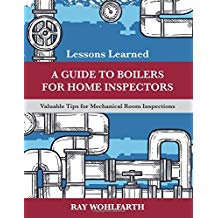
I’ve been reluctant to write on this subject because, quite frankly, I really don’t like a lot of “forms.” However, when I reflected on how much they helped my business become more professional and proficient, and how they’ve helped dozens of my consulting clients, I decided to plunge ahead.
The key is to find the happy medium on what forms to use and how many to create. I’ve seen too many businesses with not enough - and several that flat-out went overboard! I strongly believe that creating and utilizing the right forms will help make your business run better. They bring consistency to the business. They help garner information that will help you increase sales, productivity, efficiency and even morale.
Many (probably most) of you now use a variety of forms in your business. I would urge you to take a long, hard look at each and every one of them. Are they still pertinent? Do they create a benefit? Are they repetitious? Do the benefits outweigh the time and energy required to complete them?
One of the very best-run kitchen and bath dealers I ever worked with had the best forms I had ever seen. But, because the owner saw the many benefits from the forms he had instituted, he kept adding more forms. Productivity started to fall off, employee morale suffered and when he dug into the problems he discovered that he had seriously “over-formed” the business. He did an in-depth analysis and cut back to a smaller, solid core of forms. Productivity and morale improved almost immediately.
Get your team together and analyze your forms. I’ll bet some might go away, others might be improved and you might find a need for one or two new ones. This is an exercise you should do every two or three years. Times change, circumstances change - and your forms also should change. Plus, what used to be mainly paper can likely now go digital.
Here are a few forms I used in my business that I have shared with my business management workshops and when I go on consulting jobs.
Customer sign-in form:This is a professionally done registration form. You ask your clients to please sign in, giving their name, why they are there and how they heard about you. Addresses, phone numbers and email addresses are optional. This will allow you to wait on clients in the order that they came in and it will give you a “heads up” as to why they are there. Learning how they heard about you will give you good marketing information.
Customer information form:I encourage all showroom salespeople to use one of these. After you have introduced yourself and greeted the potential client, you will need to ask a series of questions to find out who the customer is, what project they are working on, where the project is and do they have a builder and/or plumber, etc.
You should have a nice binder or clipboard with the form attached. After you have started to build rapport with the prospect and possibly offered them a refreshment, ask if they would mind if you made some important notes from your conversation with them. Explain that it will help you help them! This form should include all of the qualifying questions that you need to ask and also provide room for other information that will make you look and act professional. This is the beginning of the information gathering system. Of course, if your business is in the “techie” age, then you may be using a digital notebook or tablet.
Quote/takeoff form:After you have qualified the client and determined what the project is and that it will be worth your time and their time to work together, you will begin looking at and identifying products that the prospect is interested in. This form (paper or digital) lists every possible product that you could sell them. At our business, we had a bath form, a kitchen form (that included the wet bar and laundry room) and a door and cabinet hardware form. It reminds salespeople to include every item you sell - and once again makes you look professional. In addition, it organizes the information.
Monthly sales and gross profit form:As I’ve said in past articles, I believe every salesperson should have monthly sales and profit (dollars and percentage) goals. The above form tells your people what their monthly sales and profit numbers are. There should be space for the “boss” to make appropriate comments. People like to know how they’re performing. This gives it to them.
Job description form:Every employee deserves to know exactly what their job involves. This form spells it out in detail. A series of bullet points, usually on one page, tells the employee exactly what they are expected to do.
Job performance evaluation form:Just like everyone deserves to know what’s expected of them, they also need to know exactly how they are performing in their job. A once- or twice-a-year “sit down” with their supervisor and a formal evaluation of the employee’s performance will improve performance, productivity and morale. I used two very similar forms for this: one form the supervisor used to evaluate the employee and the other form the employee used to evaluate themselves. I realize that the above two forms fall into the realm of human resources, but I feel so strongly about this that I included it here.
Vendor analysis form:This form is designed to help you evaluate each of your main vendor partners. It’s all-inclusive and allows you to evaluate quality of product, service, pricing, reps, et al. My experience told me that the consistency of quality, delivery, service and representation can change pretty dramatically – and you need to be proactive in addressing the areas of concern.
The form is also a great vehicle to help you remove duplicate and/or underperforming vendors. If you represent more than six or eight faucet lines, in my opinion that is too many. You won’t really be important to any of them. Use this form to help determine who the keepers and losers might be. I would also encourage you to have your vendors evaluate you. What’s good for one should be good for the other. Develop a form for your vendors and ask them to complete it and return it to you. I’ll bet you’ll learn a lot of things – many of you will want to improve to make you better than you are.
Competitor mystery shopping form:I found out early on that the more I knew about my competition the better I could make my business. The best way to learn about your competitors is to shop them. Do it yourself, if you can. If that’s not feasible, hire someone (a designer, architect or even a friend) and ask them to visit each of your competitors. Use a form to do it so that all the evaluations are consistent.
This form should be all-inclusive: their location, the physical property, parking, the entrance, windows, inside the showroom and everything about the showroom layout, the products and the staff. I have used this form dozens of times, both when I owned my own business and as a consultant doing mystery shopping at my clients’ competitors. It’s amazing how much you learn. You’ll see some very good things – which you might want to incorporate into your operation - and you’ll see some things that are pretty darned poor! Be careful not to take up a lot of a competitor’s sales consultant’s time - you wouldn’t want them “wasting” your sales team’s time!
I have several funny and a few embarrassing stories I could tell about my “mystery shopping” experiences, but space won’t allow me to go into detail. Suffice it to say that on several occasions I was pretending to be a prospective client and was quickly identified as Hank Darlington who writes articles and presents workshops. Pretty much, they wanted to know why in the heck I was in their showroom. Honesty always got me off the hook!
There are lots more forms we could talk about, but these are the important ones that I believe will help you grow sales, profitability and improve productivity and morale.
Good luck! I hope they help you as much as they’ve helped me!




